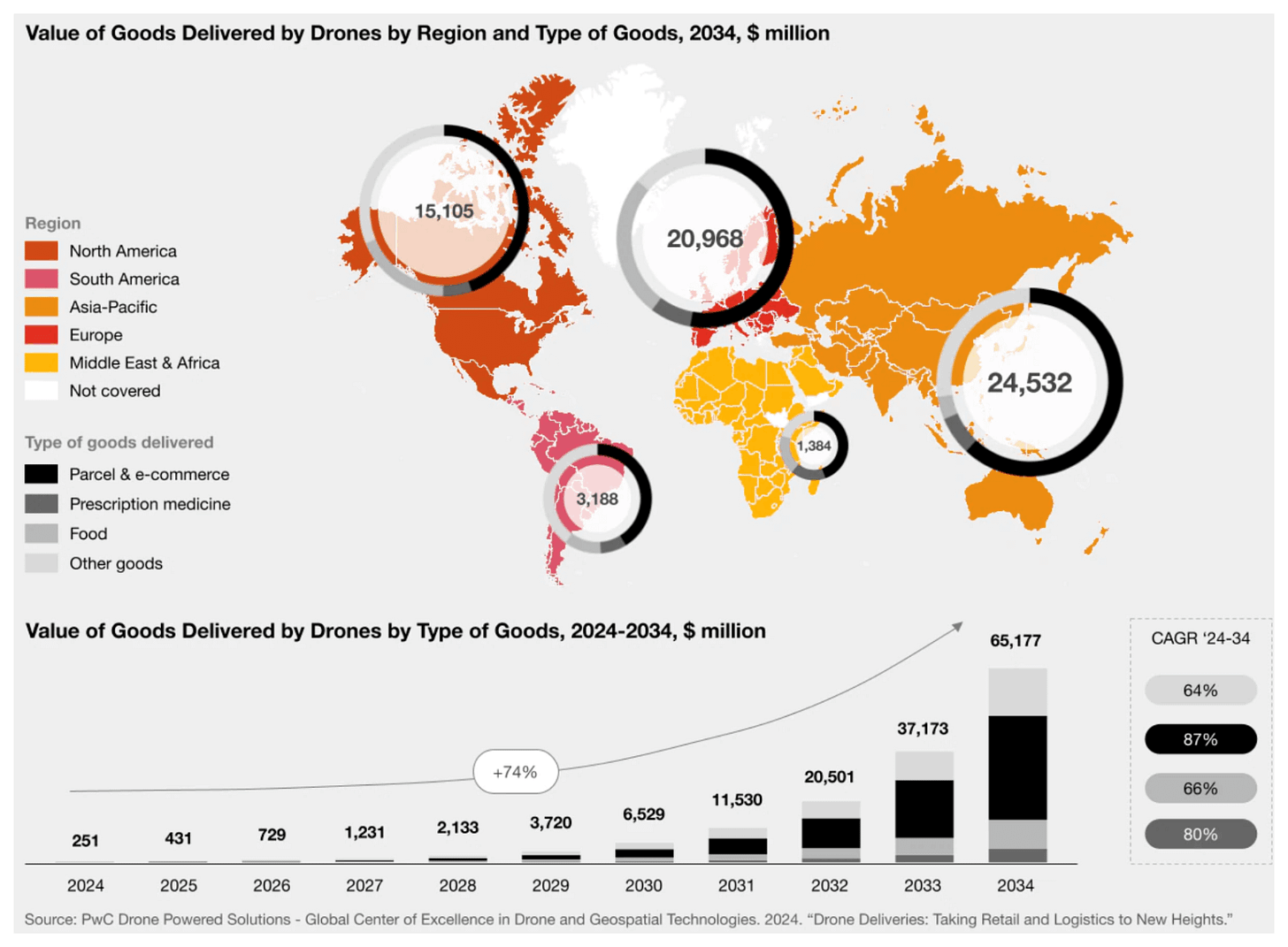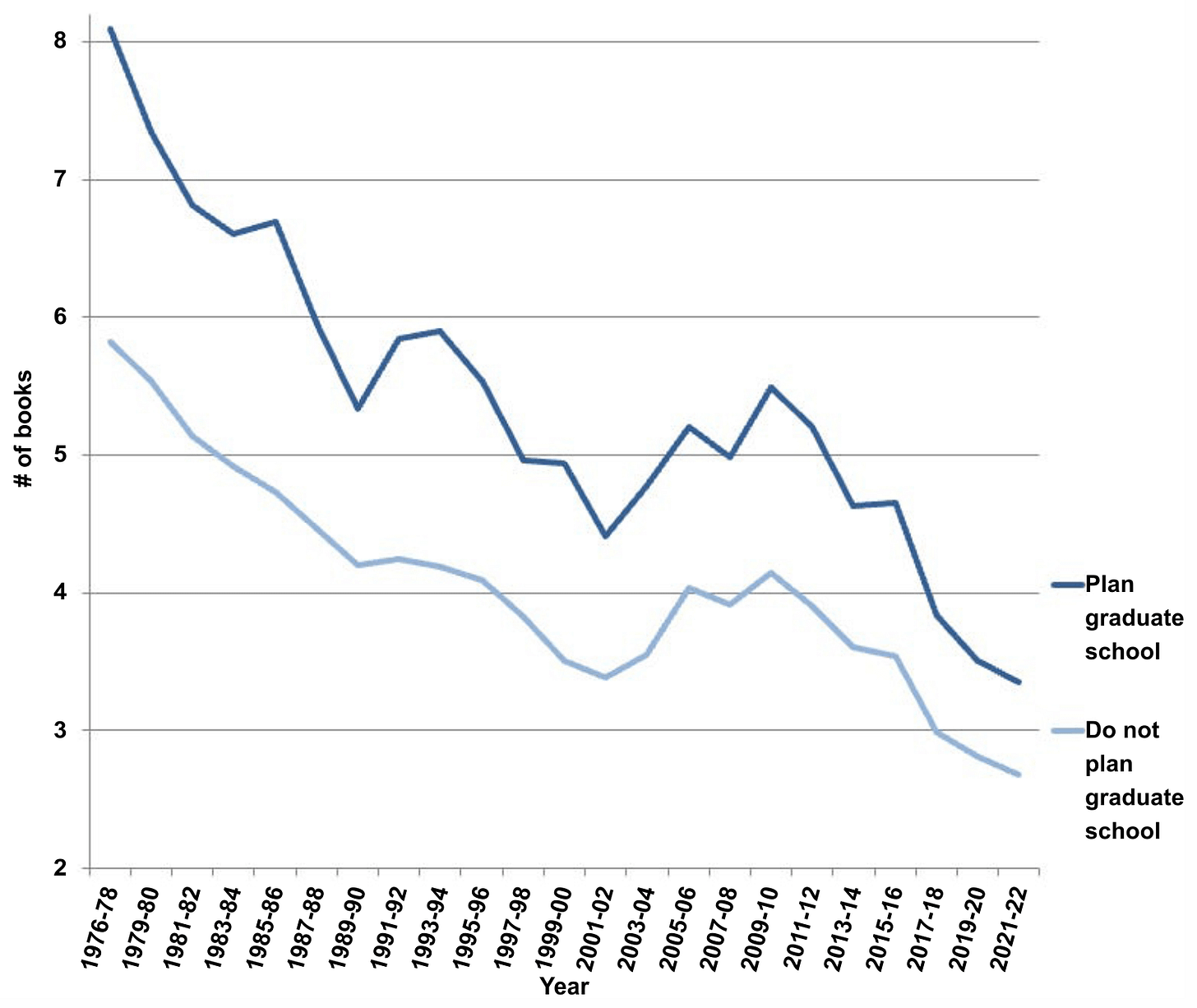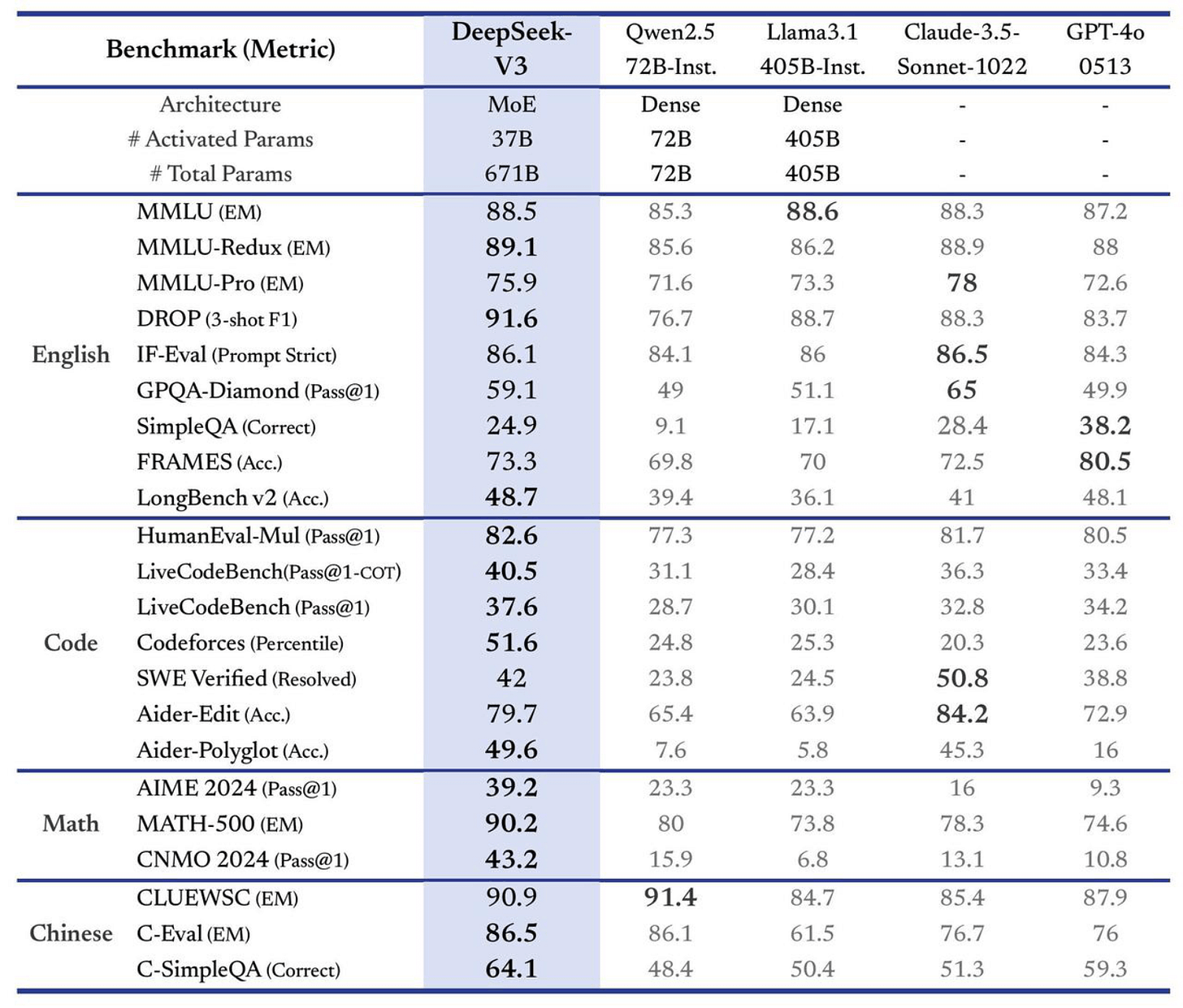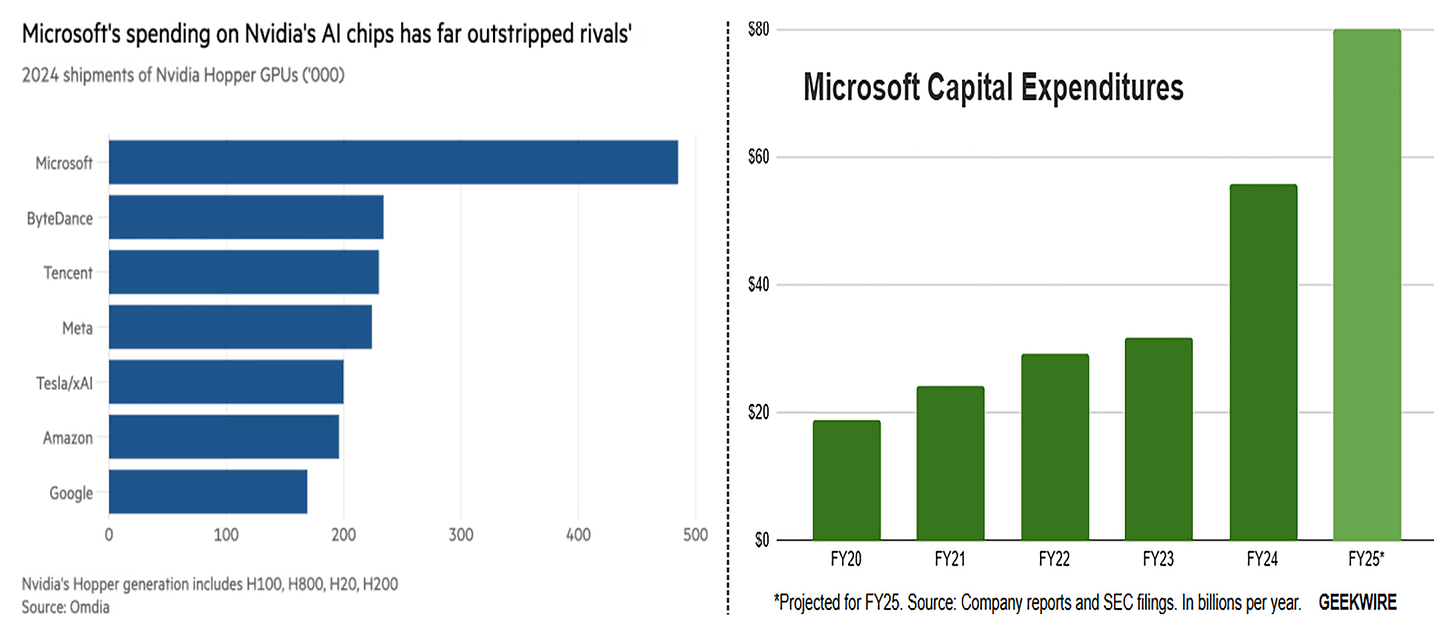Binary Circuit - January 10, 2025
Your weekly guide to most important developments in technological world
Welcome to this week’s edition of Binary Circuit
This week's must-know developments:
Drones: From Hobby to Essential Business Tool – How Will You Use Them?
Reading: Your Must-Have Skill in the Digital Age
NVIDIA Pushes AI Boundaries Yet Again
Generative AI Cost Wars: China’s Deepseek V3 gives a wake-up call to the U.S.
AI's Rapid Growth: Don't Overlook Google's Gemini 2.0
Let’s dive in!
Drones are ready to transition from a hobby to a vital component in commercial applications. Monitoring assets to package delivery, the uses are just beginning to unfold. How would you plan to use drones?
Drones have evolved from remote-controlled robots to AI-powered machines. Processing data, making decisions, and adapting to their environment offers military and economic possibilities.
The military is investing more in AI-driven drones for surveillance and tough-environment operations. Recent conflicts like the Russia-Ukraine war have increased their importance. Commercial companies like agriculture and energy use drones to monitor crops, examine infrastructure, and improve resource management, cutting costs and increasing efficiency.
Technological advances in drone delivery, including payload capacity, flight duration, and navigation, increased their relevance and applicability. In 2024, this technology emerged as a major feature of supply chain logistics, notably last-mile delivery for e-commerce, healthcare, and humanitarian relief distribution, signifying a move from experimental programs to broad applications.
With successful deployments worldwide, drones are disrupting delivery services. Walmart in the U.S. delivers 20,000 goods to 36 sites using drones, 6,000 deliveries. Meituan's drone manufacturing hub will have 220,000 deliveries by 2023, an average of 12 minutes. Asia's 7-Eleven and Australia's Doordash are also testing 15-minute drone deliveries.
Recent PwC analysis predicts drone growth. Each delivery drone may reduce carbon emissions by 45 tons per year—equivalent to 1,800 trees—and cut delivery times in half, according to the report.
Other key projections include:
808 million drone deliveries expected by 2034 from 5 million last year.
Delivery costs to drop from $6-25 to $2 by 2034.
The value of goods delivered by drones is to grow 74% annually from $251M in 2024 to $65B in 2034.
Why reading must be a priority in the digital age
Fewer people are reading books and long-form fiction, hence reading habits are dropping. We no longer find great books to hook us. We are thus not ingesting words and ideas that widen our horizons and encourage critical thought and thorough introspection. Rather, driven by convenience, we are skimming feeds, clicking on links, and reducing our attention span.
Some data points to consider:
The percentage of U.S. adults who read books has dropped by 7% in the last decade.
In 2022, only 37.6% of the U.S. adults read a novel, down from 45.2% in 2012.
Americans spend over 8 hours a day consuming digital media.
The problem is much more acute in the education system and children. In 1976, 40% of high-school seniors read at least six books for fun, while 11.5% read none. Those ratios turned around by 2022. Only 17% of the roughly 300 teachers surveyed in EdWeek say they teach full texts; almost a quarter say books are no longer crucial to their courses. Regardless of intelligence or drive, individuals read less and scroll more, as the chart below shows.
The Oxford University Press word of 2024 was “brain rot”— meaning both the “low-quality, low-value content” found online and the intellectual deterioration from its overconsumption.
A recent Financial Times article quoted Maryanne Wolf, author of Reader, Come Home: The Reading Brain In A Digital World, “…while our brains are primed for language acquisition, they are not innately programmed to read; reading is a learnt skill. But brain plasticity works both ways: use it or lose it, and we are increasingly choosing to lose it.
Adam Karaoguz, writer of Renaissance Humans, argues that “Reading is now a superpower.” We can’t agree more. Reading offers immense rewards. Just six minutes of reading can reduce stress levels by two-thirds. Regular readers report better focus, sleep, and mental well-being. Deep reading enhances critical thinking, empathy, and creativity—skills that scrolling can’t develop.
Reclaim your love for reading in 2025 and encourage your children for it.
Creating an environment for reading is essential. There is an old saying, “Read what you like until you love what you read.” Surround yourself with books. Read to your children. Start small and schedule time. Read short blogs, books, or work-related material. Joining a book club could be helpful, too.
Once more, NVIDIA stretches the artificial intelligence horizon
Launching COSMOS and DIGITS at CES 2025, the AI-chips champion signals that artificial intelligence is becoming a general-purpose technology and will shortly be woven into every thread of our lives.
COSMOS introduces artificial intelligence into the physical environment.
NVIDIA Cosmos uses physical artificial intelligence to enable autonomous automobiles and robots to process and comprehend real-world data. Cosmos enables creators of physically accurate simulations and synthetic data generation for training robots and autonomous cars to be empowered.
This development enables intelligent systems to plan, reason, and function autonomously, hence transforming sectors dependent on automation. Jensen Huang argues that we are in a period of "physical artificial intelligence," a significant departure from observation and generative artificial intelligence to actual interaction.
Early adopters pushing the envelope of robotics and autonomous driving include Agility Robotics, Figure AI, Uber, Waabi, and Wayve using Cosmos.
DIGITS lets artificial intelligence supercomputers run on your desk.
Designed for academics and developers, NVIDIA's Project DIGITS is “the world's smallest AI supercomputer.” May will see the availability of the price at $3,000 powered by the NVIDIA Grace Blackwell Superchip. It allows the execution of huge language models with up to 200 billion parameters independent of cloud infrastructure. This invention democratizes access to sophisticated artificial intelligence capabilities, therefore encouraging broad acceptance in several fields.
NVIDIA also is working with automakers to expedite the creation of driverless cars. With NVIDIA's Orin chips and software, Toyota intends to improve advanced driver assistance systems in the next car generations. In autonomous trucking solutions, Aurora is using NVIDIA's AI systems to increase transportation and logistics efficiency.
The race to reduce the cost of generative AI training and inference. China’s Deepseek V3 gives a wake-up call to the U.S. One thing is clear: whoever wins, the businesses will have plenty of low-cost options for AI integration
Many businesses still consider the high training cost of AI models as their complexity increases and the per-token expense for inferencing a major obstacle to the wide adoption of generative AI. China seems to be leveraging software engineering to bring down costs better than the U.S. While the U.S. is considered a major innovation hub for technological breakthroughs, China takes pride in optimization and makes it scalable by bringing down costs and building applications.
Kai-Fu Lee, an AI expert, former CEO of Google China, and CEO of 01.AI, noted in a conference that their LLM ranks sixth in terms of performance but was trained with just $3 million compared to $80-$100 million for GPT-4. More interestingly, 01.AI reduced the inference costs to 10 cents per million tokens, one-thirtieth of a typical comparable model.
Now, another complex Chinese model, DeepSeek V3, with 685 billion parameters, is outperforming its Western counterparts in performance and cost. DeepSeek v3 is remarkably cost-efficient, with a training cost of approximately $5.6 million and inference rates as low as $0.14–$0.28 per million tokens.
The new model excels, surpassing leading open models like Meta’s Llama-3.1 and Alibaba’s Qwen, and closely competing with closed-source models like OpenAI’s GPT-4o and Anthropic’s Claude 3.5. Its unmatched performance in Chinese and math-focused benchmarks scored 90.2 on Math-500, while Qwen scored 80.
The speed of AI advancement is remarkable. Why should you also consider Google's overlooked Gemini Deep Research with Gemini 2.0?
Google's Gemini Deep Research tool, part of Gemini 2.0, changes internet research. AI analyzes over 50 web pages to generate insights and citation-based reports. Unlike other AI assistants, it creates a customized research plan to achieve desired results.
Unique advantages
Deep Research offers real-time Google Search and relevant information. It chops up complex searches to refine results and yield insights that would take days to obtain manually.
Users can export results to Google Docs for study and collaboration. Free for the first month, $20 per month, it works with Open AI Pro ($200) and Google products for personalization.
It's promising compared to other LLMs
Compared to other AI research tools, early users saw impressive results:
Income Stream Surfers: Wrote a 3,000-word article from one search without editing.
Teacher's Tech: Showed how targeted queries yield additional sources and richer insights.
Olivia Sarikas: Excellently evaluated tweet performance using Deep Research to understand viral content.
Why is this important?
Gemini Deep Research addresses the demand for fast, reliable, automated research within a data-driven environment. This capability allows consumers to make swift, data-informed decisions, enhancing industry competitiveness and innovation.
Deep research can significantly shape our approach across various fields. For example, students can quickly grasp and learn challenging subjects, while professionals can utilize it to create reports, research markets, and analyze trends. Furthermore, content creators, authors, and academics can employ it to gather facts and write effectively.
Chart of the week:
Microsoft is the bell weather of AI development with massive investments. Is the company overly optimistic, or is it able to see the future better than its counterparts?
Microsoft was the largest buyer of NVIDIA chips in 2024 and is also the biggest spender on AI infrastructure. The big-tech giant has announced $80 billion in capex for 2025.







